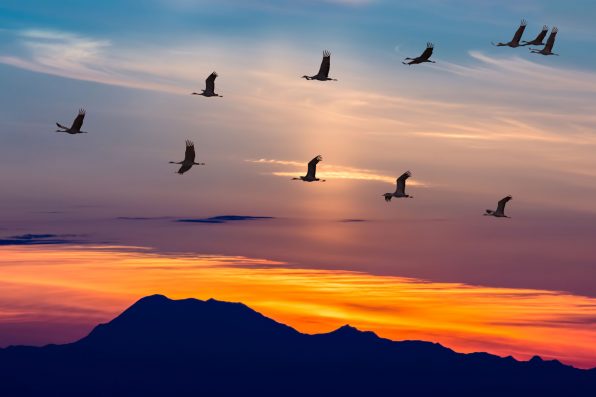Migratory Animals On Our Planet Are In Peril, With 1,189 Species Needing International Protection

All around the world, migratory species face threats of extinction and population decline, and humans are to blame. Recently, the Convention on Migratory Species released a report that revealed the dire state of the migratory animals on our planet.
Out of the thousands of existing migratory creatures, 1,189 species need international protection, which includes 962 species of birds, 94 terrestrial mammal species, 64 species of aquatic mammals, 58 fish species, 10 species of reptiles, and one insect—the monarch butterfly.
The convention found that one in five of the listed species is threatened with extinction, while 44 percent are experiencing a decline in their populations.
According to the International Union for Conservation of Nature (IUCN), migratory species are defined as animals that require travel from one habitat to another during different times of the year for survival, such as humpback whales, African elephants, monarch butterflies, sea turtles, and albatrosses.
Even though there are more birds on the list than any other species, migratory fish are in the most decline, with 97 percent of the listed fish on track to disappear for good.
“The area of the most concern to me, or most surprising, given that I focused on birds, was that fish are so threatened,” said Benjamin M. Van Doren, a biologist at the University of Illinois Urbana-Champaign. “But compared to birds, the report showed that migratory fish are in even more dire straits. I’m sure this wouldn’t come as a surprise to a fish biologist, but for me, it was really eye-opening.”
Migratory species, such as birds and fish, are highly beneficial to the environment. They help support life on Earth, impacting the ecosystems they travel to by distributing seeds and other materials, as well as providing food for other animals. Migratory species usually rely on very specific sites to feed and mate.
There are several reasons migratory creatures are withering away. For one, they encounter many dangers when traveling. Their journeys can take them across continents, covering thousands of miles.
Along the way, they must deal with climate change, unpredictable weather, habitat loss, pollution, diseases, lack of food sources, predators, and more. They also need stopover sites to replenish themselves before reaching their destinations.

mbolina – stock.adobe.com – illustrative purposes only
“Most of the threats to the species are from human activities,” said Amy Fraenkel, executive secretary of the Convention on Migratory Species.
“The reason why [the Convention on Migratory Species] exists is to bring countries together to agree on the key priorities for shared species.”
Agriculture and fishing are among the primary causes of the decline in migratory species. Humans also build roads and other structures, cutting down trees to do so.
They pollute areas with chemicals, plastics, light, and noise. However, action can be taken to solve these problems and save many of the species.
Humans can create more green spaces in cities, build windmill farms out of the flying paths of birds and bats, and construct passageways that allow animals to travel without needing to cross a busy road.
So, if we want to have flourishing forests and flowing rivers, we must do all we can to protect migratory animals.
Sign up for Chip Chick’s newsletter and get stories like this delivered to your inbox.
More About:Animals





